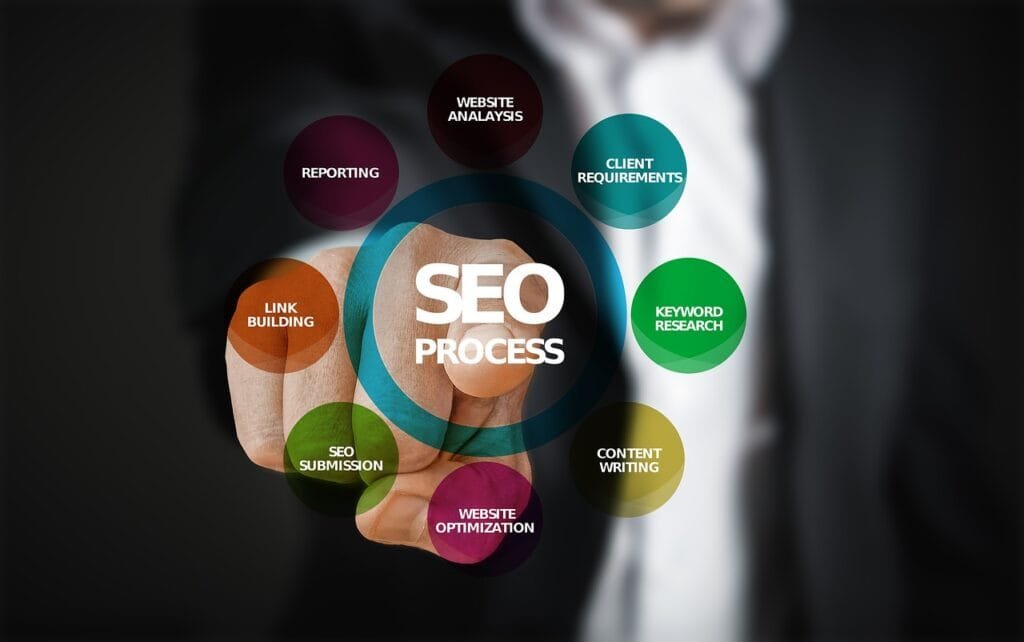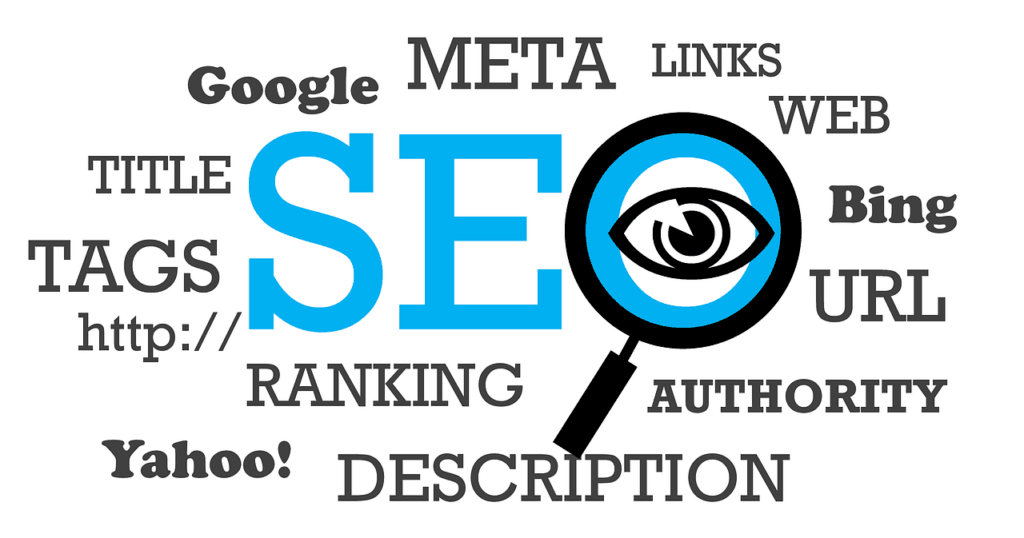The digital landscape is perpetually evolving, and in the complex and competitive world of insurance, being visible online is not just a strategic advantage – it’s a necessity. The role of Search Engine Optimization (SEO) becomes critical in this context. SEO for insurance is a meticulous orchestration of techniques, strategies, and practices that aim not only to enhance the online visibility of insurance companies but also to elevate the quality of user engagement, fostering trust and conversions.
The world of insurance is rife with complexities. From an array of policies to a diverse clientele, the dynamics are intricate and diverse. In this ambiance, SEO plays the pivotal role of a bridge that seamlessly connects potential policyholders with the exact insurance solutions they seek. It’s about ensuring that when someone types “affordable health insurance” or “comprehensive car insurance” into a search engine, the companies that have mastered the art and science of SEO appear prominently, ready to transform a query into a lasting client relationship.
The Cornerstones of Insurance SEO
Keyword Optimization:
At the heart of SEO, for any sector, lies the pivotal element of keyword optimization. For insurance companies, this translates into a meticulous process of identifying, integrating, and optimizing the key phrases and words potential clients are likely to type into their search bars.
Quality Content:
Content is king, even in the world of insurance SEO. It’s not just about quantity but the quality, relevance, and value that content delivers to the audience. In the insurance domain, this encapsulates informative articles, insightful blogs, and comprehensive guides that answer questions, address concerns, and guide potential policyholders through their journey.
Diving Deeper into Strategies
On-Page SEO:
As we venture deeper, on-page SEO emerges as a significant contributor to enhancing online visibility. For insurance companies, it entails optimizing individual web pages, ensuring that content, meta tags, and image alt texts are not just search-engine-friendly, but also resonate with the audience’s needs and preferences.
Local SEO:
In a world where customization is key, local SEO for insurance companies plays a critical role. It ensures that the services are visible to clients at a local level. For instance, optimizing Google My Business, leveraging local keywords, and focusing on local backlinks can exponentially elevate the brand’s presence in specific geographical locations.
Mobile Responsivity:
The contemporary client is mobile. Ensuring that the website is optimized for mobile users, not just in terms of visual appeal but also functional efficiency, can drastically enhance user experience and SEO rankings. Google’s mobile-first indexing is testimony to the increasing significance of mobile responsiveness.
The User Experience (UX) Paradigm
In the intricate world of insurance SEO, the user is the nucleus around which all strategies revolve. Enhancing user experience is not just a best practice; it’s a necessity.
Site Navigation:
The ease with which users can navigate through an insurance company’s website, access information, and interact with available resources is integral. A well-structured, intuitive, and streamlined website architecture facilitates enhanced user engagement, reduced bounce rates, and improved SEO rankings.
Page Load Speed:
In a world swirled by pace, speed is essence. The quicker the webpage loads, the better the user engagement. Optimizing images, leveraging browser caching, and improving server response times are some of the strategies to enhance page load speed, contributing to elevated SEO rankings and user satisfaction.
Interactive Content:
Interactive content like quizzes, calculators, and polls not only engage users but also offer insights into their preferences and needs. For insurance companies, this can be instrumental in tailoring offerings and enhancing personalization.
Experts Opinion

In the early days of my career, tactics like doorways, cloaking, and mass forum spam yielded results. However, the SEO landscape has dramatically transformed since then. Today, white-hat SEO stands as the most effective approach for long-term success. One of the key challenges I encountered throughout my journey was conveying the value of SEO activities to decision-makers. This inspired me to establish ambit Tax & accounting with a mission to communicate with businesses in a language they understand.
We focus on demonstrating the return on investment from SEO endeavors, steering clear of vanity metrics and technical jargon. This shift in approach has been instrumental in our Company’s remarkable growth. In terms of industry-specific hacks, I’ve found that the healthcare sector benefits from content-rich, authoritative websites that address user intent comprehensively. For e-commerce, schema markup and product page optimization play a pivotal role in driving organic traffic and conversions.
Additionally, we recently conducted an experiment with video SEO that yielded exceptional results for a client in the entertainment industry. Leveraging video snippets and optimizing video descriptions proved to be a game-changer, significantly boosting their online visibility and engagement. I firmly believe that staying ahead in the SEO game requires constant adaptation and innovation. It’s about embracing change, leveraging data-driven strategies, and exploring unconventional approaches to achieve remarkable outcomes.
Rohit Kanzariya DMS, Ambit Tax & Accounting Company

Implementing effective SEO tactics and strategies is crucial for business owners across all industries. Keyword research, on-page optimization, high-quality content creation, link building, mobile optimization, and local SEO are some fundamental practices that contribute to improved search engine visibility and organic traffic. However, it’s important to tailor these strategies to the specific industry and target audience to maximize their impact.
While there are no industry-specific hacks that guarantee instant success, staying informed about industry trends and conducting ongoing experiments can yield positive results. Whether it’s testing different content formats, exploring emerging platforms, or analyzing user behavior through A/B testing, businesses can uncover innovative approaches that resonate with their audience. It’s important to remember that SEO is a long-term effort, requiring continuous monitoring, analysis, and adaptation to achieve sustainable growth in search engine rankings and overall online presence.
Kami Turky, CEO of SEH

To rank businesses in the financial services and banking areas, I have found these strategies to be the most effective:
Targeting competitors via top and Best blog posts, Creating infographics and uploading them to infographic listing sites, Releasing SEO Press Releases, Asking high domain rating and high traffic websites in the financial sector to publish an article, Increasing the frequency of blog posts, Optimizing the onpage SEO for key search phrases, Getting backlinks for search phrases that are already ranking in position 2-10 which have high traffic or intent, and Optimizing the image alt text (this makes a much bigger impact than most people think!).
Jesse Tutt Chief Executive Officer Guru SEO and Web Design Services
Advanced SEO Tactics and Analytics
Backlink Building:
In the SEO cosmos, backlinks act as endorsements, testifying the credibility and authority of the website. For insurance companies, acquiring quality backlinks from reputable sites amplifies domain authority and boosts SEO rankings. However, it’s not just about quantity but the quality and relevance of these backlinks that carve a niche in the SEO realm.
Schema Markup:
The integration of schema markup is another advanced tactic. It helps search engines understand the context of the content, leading to enriched search results and enhanced visibility. For insurance firms, implementing schema markup can highlight reviews, ratings, and services directly in the search results, enhancing click-through rates.
Adapting to Algorithm Updates
Search engines, especially Google, are continually evolving. Their algorithms undergo regular updates to offer users the most relevant and quality content. For insurance SEO, adaptability becomes a cornerstone.
Staying Updated:
Keeping abreast with these updates, understanding their implications, and adapting SEO strategies accordingly is integral. It ensures the insurance company’s SEO tactics are aligned with the search engines’ evolving criteria, safeguarding visibility and rankings.
SEO Audits:
Regular SEO audits are pivotal. They unravel the strengths, weaknesses, opportunities, and threats of the SEO strategy. For insurance companies, these audits can be instrumental in identifying gaps, optimizing strategies, and ensuring that the SEO tactics are as effective as they are efficient.
Analytics and Insights
Data-Driven Decisions:
In the world of SEO, data is the guiding star. Analytics offer insights into user behavior, engagement patterns, and conversion rates. For insurance companies, leveraging tools like Google Analytics can be instrumental in making informed, insightful, and impactful decisions.
Competitor Analysis:
Understanding the SEO strategies of competitors, their keywords, backlinks, and content strategies can offer invaluable insights. It helps insurance companies identify gaps in their strategies, optimize them, and carve a distinctive niche in the competitive landscape.
Conversion Optimization:
Ultimately, the objective of SEO is not just to enhance visibility but to boost conversions. For insurance firms, optimizing the conversion paths, enhancing the call-to-actions, and ensuring that the user journey is streamlined and intuitive can transform visibility into viable business outcomes.

Related: Check out our free SEO suite

The Interplay of Social Media and Insurance SEO
In the intricate world of insurance SEO, the role of social media cannot be overlooked. It’s a dynamic platform where engagement, visibility, and conversions intersect.
Social Signals:
While social signals are not direct ranking factors for SEO, the engagement and traffic generated through social media platforms like Facebook, LinkedIn, and Twitter indirectly bolster SEO efforts. For insurance companies, creating engaging content that garners likes, shares, and comments can enhance online visibility and drive traffic to the website.
Social Listening:
Social listening tools empower insurance companies to monitor mentions, understand client sentiments, and gather insights on competitors. This data is instrumental for optimizing content, enhancing engagement, and personalizing offerings.
AI and Machine Learning in Insurance SEO
Personalization:
AI and machine learning are revolutionizing personalization in SEO. In insurance, this means offering tailored content, personalized offerings, and customized user experiences based on the data and behavioral patterns of the users.
Chatbots and Virtual Assistants:
These AI-powered tools enhance user engagement, answer queries, and guide users through their journey. In the context of SEO, they reduce bounce rates, enhance user engagement, and indirectly bolster SEO rankings.
Video Content – The Silent Game Changer
Engagement Magnet:
Video content is emerging as a powerful tool for engagement. For insurance companies, explainer videos, testimonials, and informational content can make complex insurance topics accessible, engaging, and understandable.
Video SEO:
Optimizing video content with relevant keywords, meta descriptions, and titles can enhance visibility on platforms like YouTube. The resultant traffic and engagement can indirectly augment the SEO efforts of insurance websites.
Mobile-First Optimization
AMP (Accelerated Mobile Pages):
In the mobile era, AMPs enhance the speed and performance of mobile web pages. For insurance companies, this means reduced bounce rates, enhanced engagement, and improved SEO rankings.
Voice Search Optimization:
With the proliferation of virtual assistants like Siri and Alexa, optimizing for voice search is pivotal. It involves focusing on natural language, question-based queries, and local SEO.
The Security and Trust Factors in SEO
As we advance further into the SEO landscape, the pillars of security and trustworthiness rear their significant heads. In the insurance sector, where sensitive data is at play, these elements are not just add-ons but core to the SEO strategy.
SSL Certificates:
Implementing SSL certificates to shift from HTTP to HTTPS doesn’t just secure data transmission but is also a positive signal for search engine ranking. It encapsulates a commitment to security, enhancing the trust of both the search engines and the users.
Privacy Policies and Disclosures:
Transparency in privacy policies and disclosures aids in building trust. Well-articulated, accessible, and user-friendly policies can enhance user confidence, reducing bounce rates, and fostering engagement.
Chapter 12: The User Engagement Metrics
SEO is not just about visibility but engagement. In the insurance sector, the depth and quality of engagement can make a tangible difference.
Bounce Rate Optimization:
Analyzing and optimizing the bounce rate ensures that users are not just arriving but engaging with the content. It involves enhancing content quality, website navigability, and load speed.
Session Duration and Pages Per Session:
Metrics like session duration and pages per session offer insights into user engagement. The objective is to enhance these metrics, indicative of content relevance, quality, and user interest.
Chapter 13: The Influencers of Tomorrow – Voice and Visual Search
Voice Search:
The influx of AI-powered assistants like Alexa, Siri, and Google Assistant is making voice search integral to SEO. For insurance companies, optimizing for voice involves focusing on conversational keywords, local SEO, and mobile optimization.
Visual Search:
Platforms like Google Lens are heralding the era of visual search. Optimizing images, utilizing alt texts, and focusing on image quality can make content discoverable via visual search, opening new avenues of traffic and engagement.
Conclusion: Navigating the Future of Insurance SEO
As we meander through the elaborate journey of insurance SEO, it becomes inherently clear that this isn’t a static field but a dynamic, ever-evolving landscape. It’s where technology, strategy, user experience, and innovation converge, weaving a narrative that’s as intricate as it’s impactful.
From the nuanced art of keyword optimization and content strategy to the profound impact of AI and machine learning, every facet of SEO for insurance is marked by continuous evolution. Social media isn’t just a platform for engagement but a catalyst that amplifies SEO efforts. Video content emerges as a silent yet potent tool, making the complex world of insurance accessible and engaging.
READ NEXT:
- Broken Link Building: Techniques and Best Practices
- Multilingual SEO for Global Banking Brands
- User-Centric SEO for SaaS: Balancing Technology and User Experience
- Trust the Experts: SEO for Financial Advisers
- ADA Compliance and SEO: What You Need to Know






















Comments are closed.